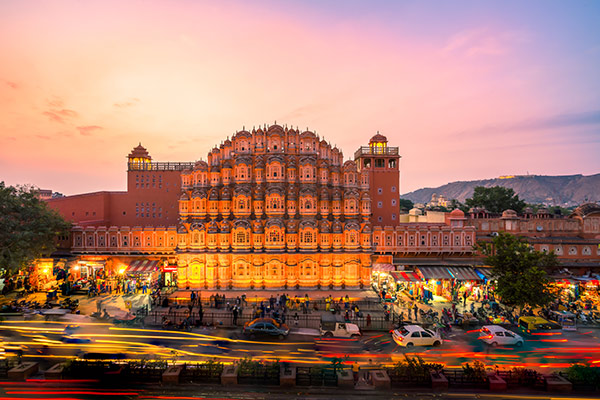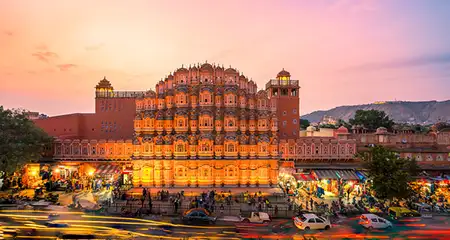From now on, travelers planning a trip to Jaipur have one more reason to rejoice. You are visiting not just one of the culturally rich cities in India, but a UNESCO World Heritage site as well. Jaipur, fondly called the Pink City of India, has recently made its way to the World Heritage Site list of UNESCO. The declaration was made on 6th July 2019 and the decision to include the city in the list was made at the 43rd Session of the World Heritage Committee (WHC) of UNESCO held at Baku in Azerbaijan.
According to a senior official, ICOMOS had inspected Jaipur in 2018 and the WHC, after the inspection, had added it to the heritage site list. The ICOMOS or the International Council on Monuments and Sites is responsible for providing the WHC with evaluations of properties proposed to be included in the World Heritage Site list.
The Pink City was built during the reign of Maharaj Sawai Jai Singh II in 1727 and is the capital of Rajasthan. The city was nominated and found its way to the UNESCO World Heritage Site list as it displays the architectural and town planning features of the late medieval era. “In town planning, it shows an interchange of ancient Hindu, Mughal and contemporary Western ideas that resulted in the form of the city”, says UNESCO Office, New Delhi.
The UNESCO office also noted that the city had redefined the concepts of a booming trade and commercial center in South Asia during the medieval period. Jaipur also boasts of a vibrant tradition with its alluring crafts and arts that have gained worldwide recognition.
With the inclusion of Jaipur in the list, the number of UNESCO World Heritage Sites in India has grown to 38. This includes 30 cultural sites, seven natural sites, and one mixed site. Ahmedabad was the first Indian city to find its place on the list in 2017. Currently, two historical monuments in Jaipur are also on the World Heritage Site list, namely Jantar Mantar and Amber Fort, which is part of the Hill Forts of Rajasthan. Other UNESCO World Heritage Sites in Rajasthan include Chittorgarh Fort, Kumbhalgarh Fort, Ranthambore Fort, Gagron Fort, Jaisalmer Fort, and Keoladeo National Park.
The WHC consists of representatives from 21 State Parties who meet annually. The WHC is responsible for holding the World Heritage Convention. So far 1,092 properties and sites from 167 countries have been listed as UNESCO World Heritage Sites.




























